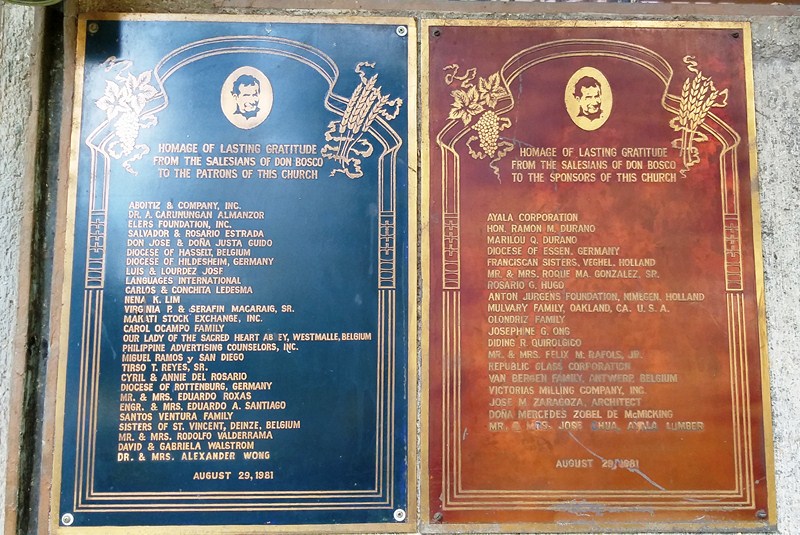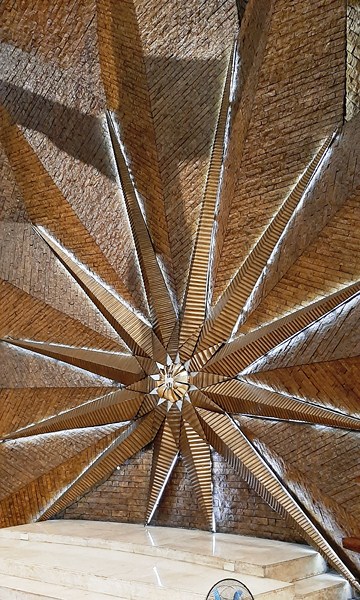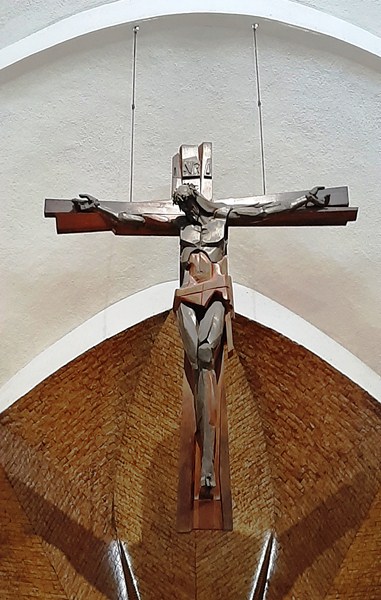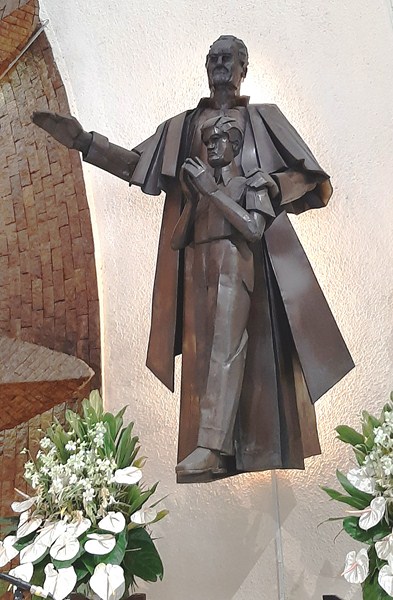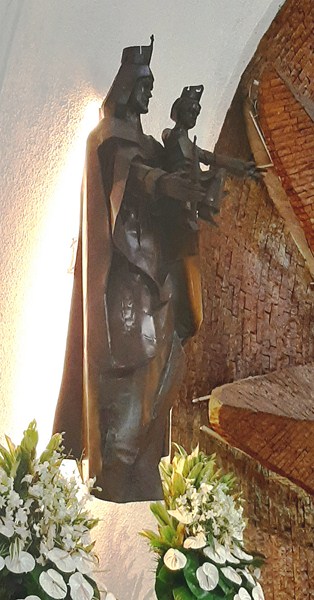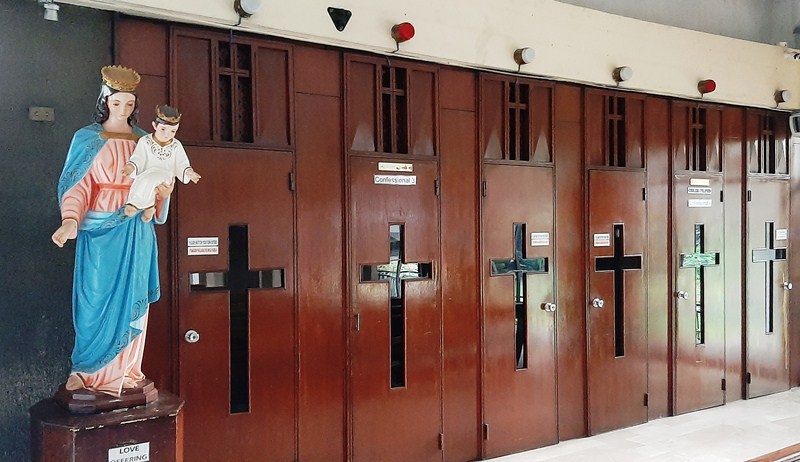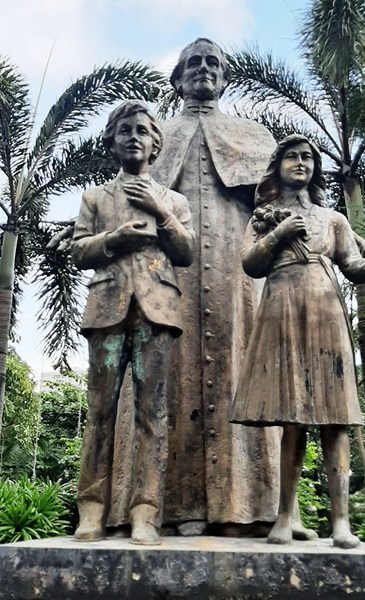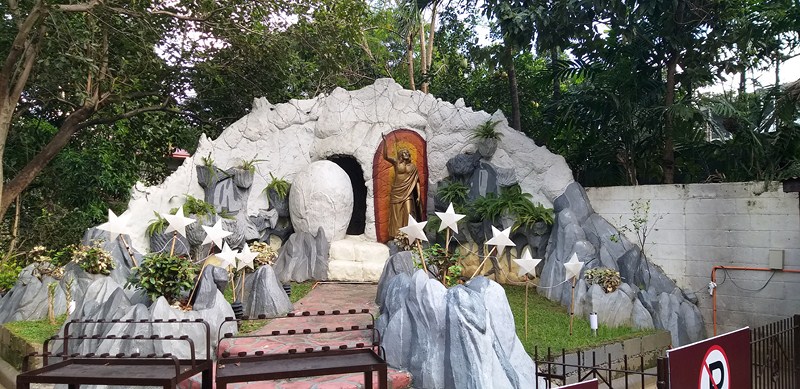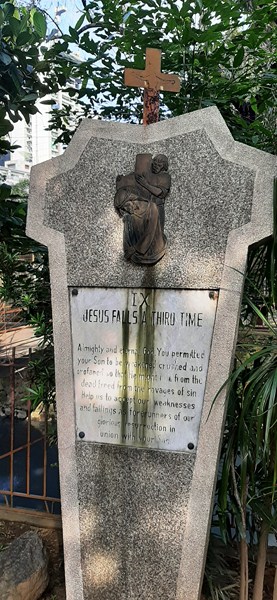The Church of St. John Bosco, probably one of the famous churches in the city and now one of the most famous landmarks of Makati’s Central Business District, is noted for its unique and breathtaking geometric architecture.
This church, standing humbly amid the skyscrapers of Makati City, was designed by the late National Artist for Architecture (2014) Jose Maria V. Zaragoza, one of its parishioners and a daily mass goer.
The relatively new parish was established on March 2, 1976 (just a year after I graduated high school in adjacent Don Bosco Technical Institute), with Fr. Godrey Roozen as the first parish priest.
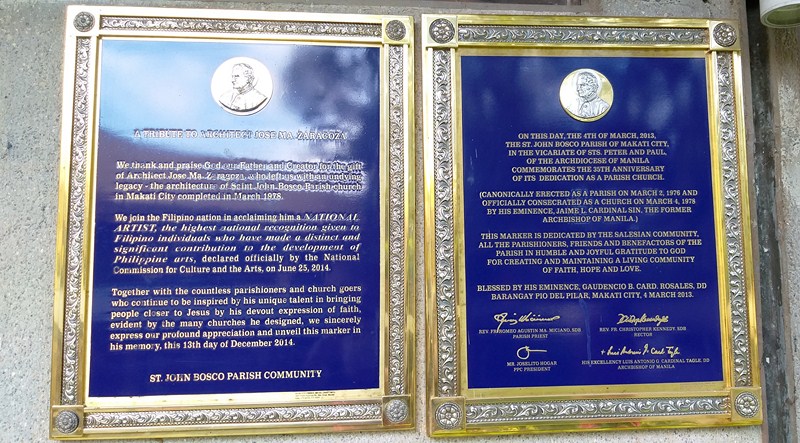
Plaques paying tribute to the late church architect and National Artist Jose Ma. Zaragoza (left) and the 35 anniversary of the church’s dedication (right)
Zaragoza, one of the well-known architects of the 1970’s, was commissioned by the Salesian Congregation because of his remarkable use of concrete which show unstagnant flow of forms.
One of a significant body of ecclesiastical architecture of about 45 religious structures across the country designed by Zaragoza, he was the same architect behind the postwar Santo Domingo Church, the old Union Church of Manila nearby, and the 15-storey Meralco Building, among others.
Though not be as prominent as the aforementioned works of his, Zaragoza’s work on the church is still an iconic one.
For the design of the church, Zaragoza employed a clamshell-inspired contemporary design with a semicircular interior layout. Cardinal Jaime Sin laid the cornerstone of the church on April 15, 1977 and, on its completion, also dedicated it on March 4 1978. Its exterior is reminiscent of the edge of a leaf.
The distinctive and iconic concave interior features flowing lines. The starburst tabernacle has a golden anahaw or footstool palm (Saribus rotundifolius) leaf as its dramatic backdrop.
Above the altar, series of widening ripples evoke the graces streaming from the Blessed Sacrament and flowing into the vaulted ceiling.
The exposed white ceiling, accented with diagonal, crisscrossing concrete beams (sort of a stylized net for the “fishers of men”), also gives an impression of outward rays.
The treatment of the ceiling adheres to Pier Luigi Nervi’s thrust in dealing with circular covers or roofs.
The statues (St. John Bosco with St. Dominic Savio, the Madonna and Child) and the suspended crucifix (which seemingly rides the crest of a magnificent wave) that adorn the church were done by the late sculptor Eduardo Castrillo.
At night, this awe-inspiring interior looks better because of the lighting.
Church of St. John Bosco: Antonio Arnaiz Ave. (formerly Pasay Rd.) cor. Amorsolo St., Makati City 1200, Metro Manila. Tel: +63-2-8894-5932 to 34. Website: www.sjbmakati.com. E-mail: info@sjbmakati.com.



